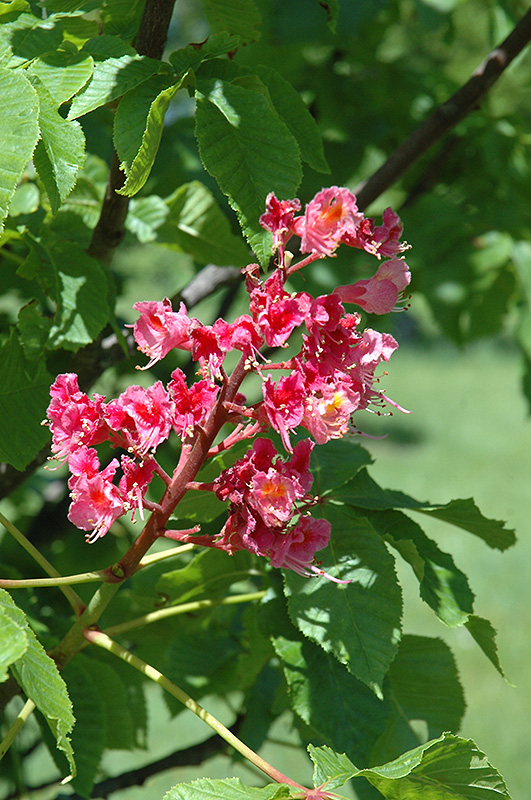>> Home
O'Neills Red Horse Chestnut
Aesculus x carnea 'O'Neills Red'
Height: 40 feet
Spread: 40 feet
Sunlight:
![]()
![]()
Hardiness Zone: 4
Description:
A spectacular spring-blooming tree for smaller home landscapes, featuring rich red flowers on long, upright panicles at the ends of the branches, very showy in bloom, makes a great accent tree; spiny seeds may necessitate some maintenance
Ornamental Features
O'Neills Red Horse Chestnut features bold spikes of cherry red flowers rising above the foliage in mid spring. It has dark green deciduous foliage which emerges light green in spring. The palmate leaves turn yellow in fall. However, the fruit can be messy in the landscape and may require occasional clean-up.
Landscape Attributes
O'Neills Red Horse Chestnut is a dense deciduous tree with a more or less rounded form. Its relatively coarse texture can be used to stand it apart from other landscape plants with finer foliage.
This tree will require occasional maintenance and upkeep, and is best pruned in late winter once the threat of extreme cold has passed. It has no significant negative characteristics.
O'Neills Red Horse Chestnut is recommended for the following landscape applications;
- Accent
- Shade
Planting & Growing
O'Neills Red Horse Chestnut will grow to be about 40 feet tall at maturity, with a spread of 40 feet. It has a low canopy with a typical clearance of 4 feet from the ground, and should not be planted underneath power lines. It grows at a medium rate, and under ideal conditions can be expected to live for 60 years or more.
This tree does best in full sun to partial shade. It prefers to grow in average to moist conditions, and shouldn't be allowed to dry out. It may require supplemental watering during periods of drought or extended heat. It is not particular as to soil type or pH. It is highly tolerant of urban pollution and will even thrive in inner city environments. This particular variety is an interspecific hybrid.
